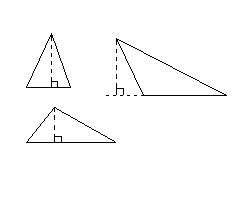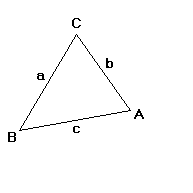Please wait while we process your payment
If you don't see it, please check your spam folder. Sometimes it can end up there.
If you don't see it, please check your spam folder. Sometimes it can end up there.
Please wait while we process your payment
Get instant, ad-free access to our grade-boosting study tools with a 7-day free trial!
Learn more



This site is protected by reCAPTCHA and the Google Privacy Policy and Terms of Service apply.
Create Account
Select Plan
Payment Info
Start 7-Day Free Trial!

Annual
2-49 accounts
$22.49/year + tax
50-99 accounts
$20.99/year + tax
Select Quantity
Price per seat
$29.99 $--.--
Subtotal
$-.--
Want 100 or more? Request a customized plan
You could save over 50%
by choosing an Annual Plan!

SAVE OVER 50%
compared to the monthly price!
| Focused-studying | ||
| PLUS Study Tools | ||
| AP® Test Prep PLUS | ||
| My PLUS Activity | ||
$22.49/month + tax
Save 25%
on 2-49 accounts
$20.99/month + tax
Save 30%
on 50-99 accounts
| Focused-studying | ||
| PLUS Study Tools | ||
| AP® Test Prep PLUS | ||
| My PLUS Activity | ||
No Fear provides access to Shakespeare for students who normally couldn’t (or wouldn’t) read his plays. It’s also a very useful tool when trying to explain Shakespeare’s wordplay!
Erika M.
I tutor high school students in a variety of subjects. Having access to the literature translations helps me to stay informed about the various assignments. Your summaries and translations are invaluable.
Kathy B.
Teaching Shakespeare to today's generation can be challenging. No Fear helps a ton with understanding the crux of the text.
Kay H.
No Fear provides access to Shakespeare for students who normally couldn’t (or wouldn’t) read his plays. It’s also a very useful tool when trying to explain Shakespeare’s wordplay!
Erika M.
I tutor high school students in a variety of subjects. Having access to the literature translations helps me to stay informed about the various assignments. Your summaries and translations are invaluable.
Kathy B.
Teaching Shakespeare to today's generation can be challenging. No Fear helps a ton with understanding the crux of the text.
Kay H.
Create Account
Select Plan
Payment Info
Start 7-Day Free Trial!
You will only be charged after the completion of the 7-day free trial.
If you cancel your account before the free trial is over, you will not be charged.
You will only be charged after the completion of the 7-day free trial. If you cancel your account before the free trial is over, you will not be charged.
Order Summary
Annual
7-day Free Trial
SparkNotes PLUS
$29.99 / year
Annual
Quantity
51
PLUS Group Discount
$29.99 $29.99 / seat
Tax
$0.00
SPARK25
-$1.25
25% Off
Total billed on Nov 7, 2024 after 7-day free trail
$29.99
Total billed
$0.00
Due Today
$0.00
Promo code
This is not a valid promo code
Card Details
By placing your order you agree to our terms of service and privacy policy.
By saving your payment information you allow SparkNotes to charge you for future payments in accordance with their terms.
Powered by stripe
Legal
Google pay.......



Please wait while we process your payment

Sorry, you must enter a valid email address
By entering an email, you agree to our privacy policy.
Please wait while we process your payment

Sorry, you must enter a valid email address
By entering an email, you agree to our privacy policy.
Please wait while we process your payment

Your PLUS subscription has expired
Please wait while we process your payment
Please wait while we process your payment

Area of Triangles
While there is no simple formula to determine area for most quadrilaterals, and most polygons for that matter, we saw last section that for the special quadrilaterals parallelograms and trapezoids there are specific formulas for determining area. The area of a triangle, however, does. This is why it is so important that any polygon can be divided into a number of triangles. The area of a polygon is equal to the sum of the areas of all of the triangles within it.
The area of a triangle can be calculated in three ways. The most common expression for the area of a triangle is one-half the product of the base and the height (1/2AH). The height is formally called the altitude, and is equal to the length of the line segment with one endpoint at a vertex and the other endpoint on the line that contains the side opposite the vertex. Like all altitudes, this segment must be perpendicular to the line containing the side. The side opposite a given vertex is called the base of a triangle. Here are some triangles pictured with their altitudes.

Another way to calculate the area of a triangle is called Heron's Formula, named after the mathematician who first proved the formula worked. It is useful only if you know the lengths of the sides of a triangle. The formula makes use of the term semiperimeter. The semiperemeter of a triangle is equal to half the sum of the lengths of the sides. Heron's Formula states that the area of a triangle is equal to the square root of s(s-a)(s-b)(s-c), where s is the semiperimeter of the triangle, and a, b, and c are the lengths of the three sides. The proof of Heron's Formula is rather complex, and won't be discussed here, but his formula works like a charm, especially if all that is known about a triangle is the lengths of its sides.
The third and final way to calculate the area of a triangle has to do with the
angles as well as the side lengths of the
triangle. Any triangle has three sides and three angles. These are known as
the six parts of a triangle. Let the lengths of the sides of the triangle equal
a, b, and c. If the vertices opposite each length are angles of measure A, B,
and C, respectively, then the triangle would look like this:

With these formulas, it is possible to calculate the area of a triangle any time you have any of the following information: 1) the length of the base and its altitude; 2) the lengths of all three sides; or 3) the length of two sides and the measure of their included angle. With these tools, it is possible to calculate the area of triangles, and, as we shall see, by summing the areas of triangles within a polygon, it is possible to calculate the area of any polygon.
Please wait while we process your payment





